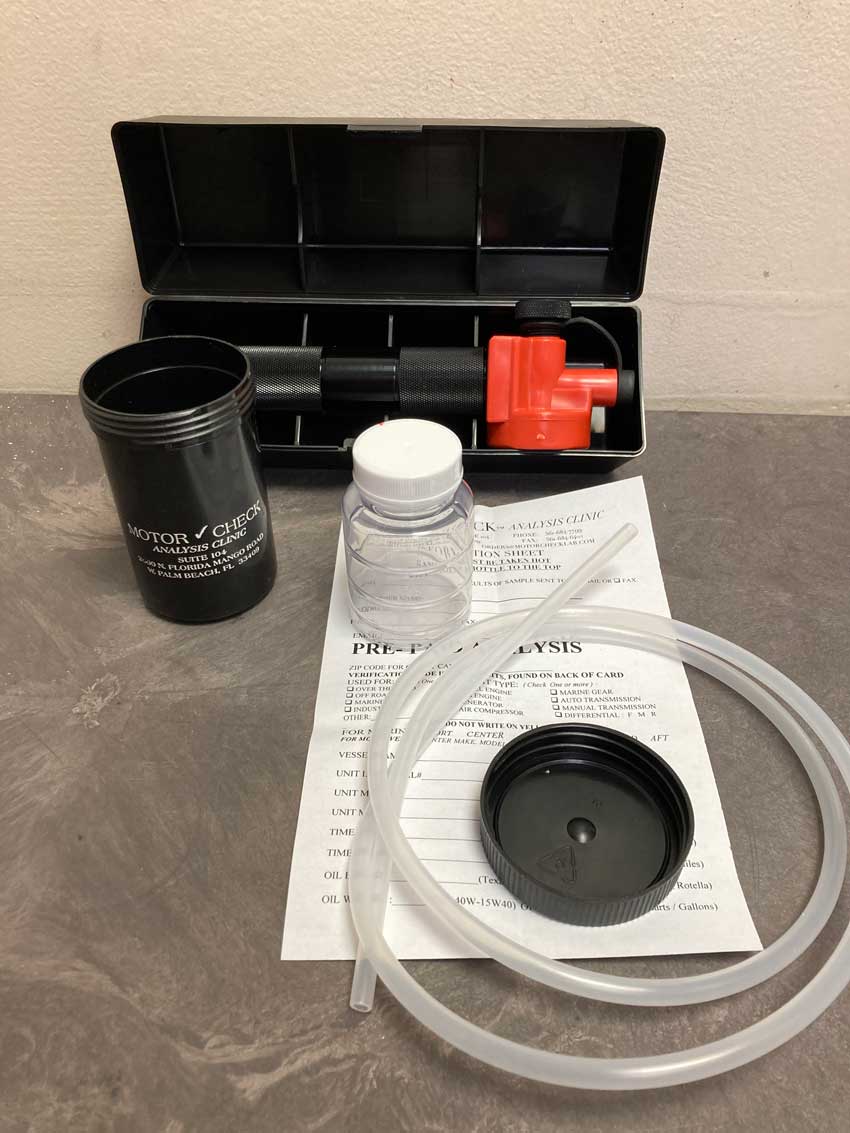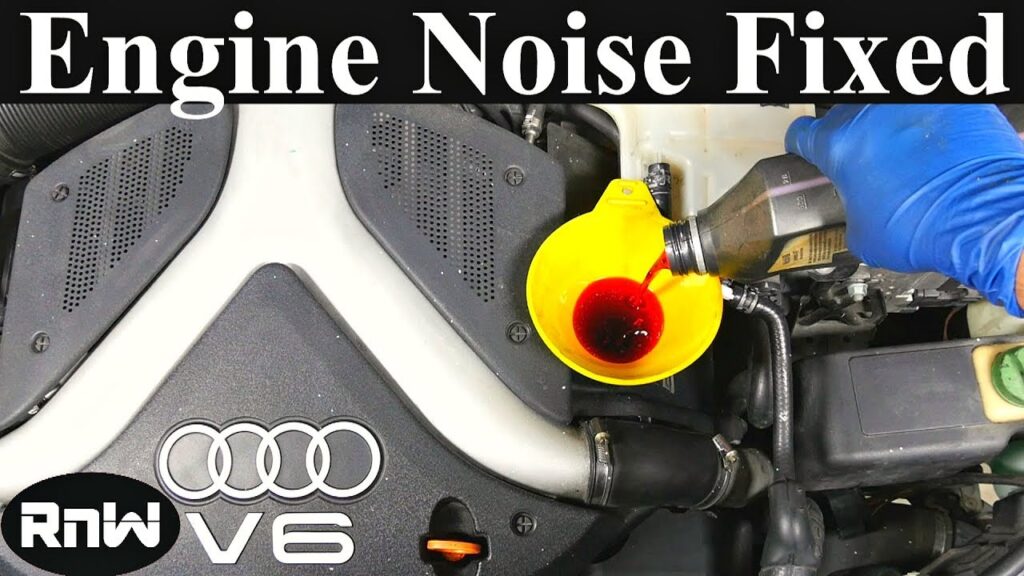An Engine Oil Analysis Kit is a tool used to analyze the quality and condition of engine oil. It helps to determine the presence of contaminants, wear metals, and other elements that can affect the performance of the engine.
Engine oil is a vital component of any engine, and its quality and condition can greatly affect the performance and longevity of the engine. An Engine Oil Analysis Kit is designed to help engine owners and operators monitor the condition of their oil, and take necessary actions to maintain their engine’s health.
By analyzing the oil, this kit can detect any potential problems early on, such as the presence of contaminants, wear metals, and other elements that can cause damage to the engine. With this information, engine owners can take proactive measures to prevent costly repairs and downtime. The Engine Oil Analysis Kit is a valuable tool for anyone who wants to ensure the optimal performance and longevity of their engine.

Credit: www.techenomics.net
Introduction To Engine Oil Analysis
Engine oil analysis is a crucial aspect of maintaining the health and performance of a vehicle’s engine. By routinely examining the condition of the engine oil, potential issues and areas for improvement can be identified, ultimately leading to extended engine life and reduced maintenance costs.
Why It’s Essential
Regular engine oil analysis is essential for detecting early signs of engine wear, contamination, and degradation. This proactive approach allows for timely corrective actions to be taken, preventing major component failures and costly repairs.
Basic Principles
Engine oil analysis operates on the basic principles of evaluating the physical and chemical properties of the oil, including viscosity, wear metals, contaminants, and additives. These parameters provide valuable insights into the overall health and performance of the engine.
Components Of An Analysis Kit
An engine oil analysis kit is a valuable tool for monitoring the condition of your vehicle’s engine. It provides insights into the performance and health of the engine, helping to identify potential issues before they become major problems. A comprehensive analysis kit typically consists of several key components that work together to provide accurate and detailed information about the engine oil and overall engine condition.
Sampling Tools
The sampling tools included in an engine oil analysis kit are essential for collecting oil samples from the engine. These tools often include a sampling pump, tubing, and a clean sample bottle. The sampling pump is used to extract a small quantity of oil from the engine, while the tubing ensures a clean and uncontaminated transfer of the oil into the sample bottle. Properly designed sampling tools are crucial for obtaining representative oil samples for analysis.
Testing Equipment
The testing equipment in an analysis kit typically includes items such as a spectrometer, centrifuge, and particle counter. The spectrometer is used to measure the chemical composition of the oil, detecting any abnormal levels of contaminants or wear metals. A centrifuge is utilized to separate suspended particles from the oil, while a particle counter quantifies the number and size of particles present. These testing tools provide valuable insights into the overall condition and cleanliness of the engine oil.
Step-by-step Guide To Using Your Kit
Performing regular oil analysis is essential to ensure the optimal performance and longevity of your engine. With the Engine Oil Analysis Kit, you can easily collect a sample and send it to the lab for analysis. Follow this step-by-step guide to make the most of your kit:
Collecting The Sample
- Start by preparing the necessary tools and materials: the oil analysis kit, a clean container, and gloves.
- Ensure your engine has been running for at least 15 minutes to ensure the oil is adequately mixed.
- Turn off the engine and allow it to cool down for a few minutes.
- Locate the oil dipstick or oil drain plug, depending on your engine type.
- Using gloves, carefully remove the dipstick or open the drain plug to collect the oil sample.
- Collect approximately 2-3 ounces of oil, taking care not to contaminate the sample with debris or dirt.
- Transfer the oil sample into the provided container, ensuring it is tightly sealed to prevent leakage.
Sending To The Lab
- Once you have collected the oil sample, ensure the container is labeled correctly with your engine’s information.
- Fill out the necessary paperwork and include it with the sample for accurate analysis.
- Place the sealed container inside the provided packaging, ensuring it is securely closed.
- Follow the instructions provided with the kit to send the package to the designated lab.
- Consider using a reliable courier service to ensure safe and timely delivery of your sample.
By following this step-by-step guide, you can easily collect and send your engine oil sample for analysis. The lab will provide detailed insights into the condition of your oil, detecting any potential issues early on and allowing you to take appropriate measures to maintain your engine’s health.

Credit: motorchecklab.com
Reading The Results
Unlock valuable insights with the Engine Oil Analysis Kit, providing in-depth data on your engine’s health through comprehensive results interpretation. Make informed maintenance decisions for optimal performance and longevity.
Understanding Values
Reading the results of your engine oil analysis is crucial in maintaining the performance and longevity of your vehicle. By understanding the values indicated in the analysis report, you can make informed decisions about the condition of your engine and take appropriate actions to prevent potential issues. Here are the key values to pay attention to: 1. Viscosity: Viscosity measures the oil’s resistance to flow and is an essential property for lubricating engine components. It is represented by a numerical value and a letter, such as 10W-30. Higher values indicate thicker oil, while lower values indicate thinner oil. Ensure the viscosity value matches the recommended range specified by the manufacturer. 2. Contaminants: The presence of contaminants in the oil can indicate wear and tear or the introduction of foreign substances. Look for values indicating the levels of dirt, metals, water, fuel, and coolant in the analysis report. Elevated levels may suggest the need for further investigation or maintenance. 3. Additives: Engine oil contains various additives that enhance its performance, such as detergents, dispersants, anti-wear agents, and antioxidants. The analysis report will provide information about the levels of these additives. Ensure the values are within the acceptable range to ensure optimal engine protection.Identifying Issues
When reading the results of your engine oil analysis, it’s important to be able to identify potential issues that may require attention. Here are some common issues to look out for: 1. Excessive Wear: Elevated levels of metals in the analysis report may indicate excessive wear on engine components. This could be a sign of poor lubrication, contamination, or other mechanical issues. If you notice abnormal levels, consult with a professional mechanic to diagnose and address the underlying problem. 2. Contamination: High levels of contaminants, such as dirt, water, or fuel, can impact the oil’s ability to lubricate effectively. Contamination may result from inadequate maintenance, faulty seals, or other external factors. Identifying the source of contamination can help prevent further damage and ensure optimal engine performance. 3. Oil Breakdown: Over time, engine oil undergoes degradation due to heat, oxidation, and chemical reactions. The analysis report may indicate the oil’s condition and its remaining useful life. If the oil has exceeded its recommended service interval or shows signs of significant breakdown, it is advisable to replace it promptly to avoid potential engine damage. By carefully reading and understanding the results of your engine oil analysis, you can proactively address any issues and ensure the continued smooth operation of your vehicle. Regular oil analysis can help you detect potential problems early on, saving you from costly repairs and extending the life of your engine. Stay vigilant and make informed decisions based on the values provided in the analysis report.Common Findings And Their Meanings
Common findings and their meanings in engine oil analysis can provide valuable insights into the condition of your engine. By understanding the significance of wear metals and contaminants, you can take proactive measures to maintain the optimal performance of your vehicle.
Wear Metals
Wear metals are indicative of the gradual erosion of engine components, such as iron, aluminum, and copper. Elevated levels of these metals may suggest abnormal wear in specific parts, potentially pointing to issues with bearings, pistons, or cylinder walls. Monitoring wear metals enables early detection of mechanical problems, helping to prevent costly repairs and unexpected breakdowns.
Contaminants
Contaminants in engine oil, such as dirt, fuel, and coolant, can compromise the lubricating properties of the oil and accelerate component wear. Excessive dirt contamination can lead to abrasive damage, while the presence of fuel and coolant may indicate issues with the fuel system or cooling system. Identifying and addressing these contaminants promptly is crucial for preserving the longevity of the engine.

Credit: apexoillab.com
Case Studies: Real-life Examples
Explore real-life examples of the effectiveness of engine oil analysis kits through case studies. Witness how these kits have helped uncover crucial insights into oil condition, wear debris, and equipment performance, enabling informed maintenance decisions and cost savings.
Preventive Maintenance Success
Regular oil analysis led to fewer breakdowns.
Early identification of issues saved on repairs.
Catching Problems Early
Timely analysis prevented major engine damage.
Quick action avoided costly replacements.
Diy Vs. Professional Kits
When deciding between an engine oil analysis kit, it’s essential to weigh the options of DIY kits versus professional kits.
Pros And Cons
- DIY Kits:
- + Cost-effective
- + Convenient for quick analysis
- – Limited accuracy
- – Requires user expertise
- Professional Kits:
- + High accuracy results
- + Expert analysis and recommendations
- – Higher cost investment
- – Longer turnaround time
Making The Right Choice
Choosing between DIY and professional engine oil analysis kits depends on your budget and the level of accuracy and support you require.
For quick and simple checks, DIY kits are suitable, while professional kits offer in-depth insights for advanced analysis.
Future Of Engine Oil Analysis
Technological Advancements
Modern engine oil analysis kits utilize advanced technology for accurate results.
These kits are equipped with sensors and software for efficient data collection.
Predictive Maintenance
Engine oil analysis allows for predictive maintenance to prevent breakdowns.
By analyzing oil samples, potential issues can be identified and addressed proactively.
Frequently Asked Questions
What Is An Engine Oil Analysis Kit?
An engine oil analysis kit is a set of tools and tests used to analyze the condition of engine oil. This kit helps to identify any contaminants, wear metals, and other issues that may be affecting the performance and longevity of an engine.
How Does An Engine Oil Analysis Kit Work?
An engine oil analysis kit typically includes a sample bottle for collecting a small amount of engine oil, as well as instructions for sending the sample to a laboratory for analysis. The lab will test the sample for various factors, including viscosity, acidity, and the presence of contaminants or wear metals.
Why Is It Important To Use An Engine Oil Analysis Kit?
Using an engine oil analysis kit can help identify potential problems with an engine before they become serious issues. By analyzing the condition of the engine oil, mechanics and technicians can determine if the engine is functioning properly, or if there are any underlying issues that need to be addressed.
How Often Should Engine Oil Be Analyzed?
It is recommended that engine oil be analyzed at least once a year, or after every 10,000 miles of driving. However, if an engine is experiencing issues or if the oil appears to be deteriorating more quickly than usual, it may be necessary to analyze the oil more frequently.
Conclusion
The Engine Oil Analysis Kit is a valuable tool for maintaining vehicle health. Regular use can prevent costly repairs. By analyzing oil samples, you can detect issues early. Stay proactive in your vehicle maintenance with this user-friendly and effective kit.
Your engine will thank you.

